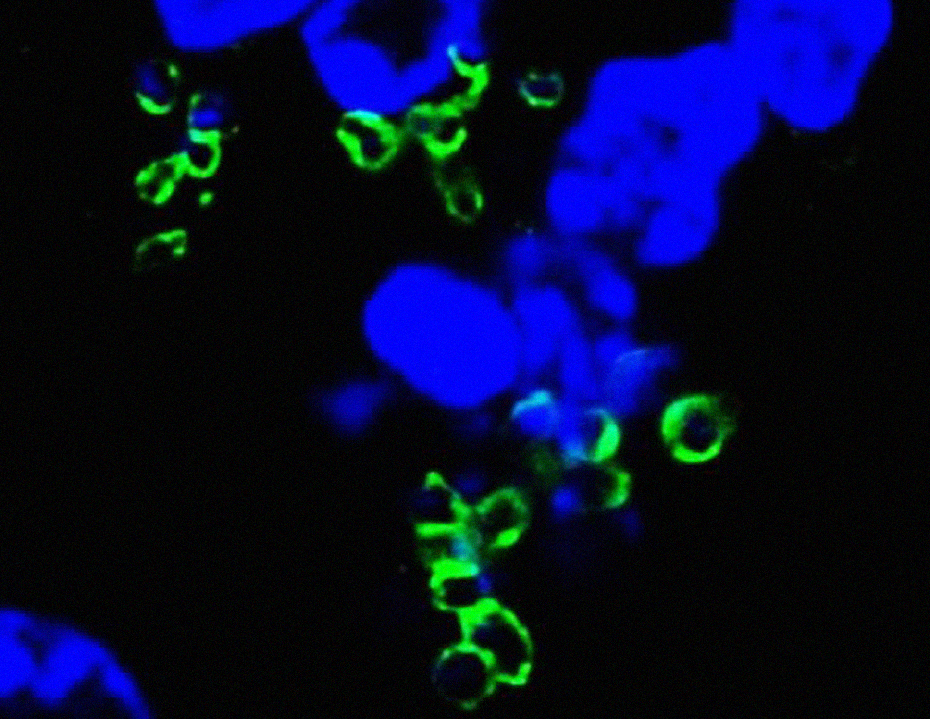Molecular Parasitology
ABOUT
Research performed by the Molecular Parasitology (MP) group focuses on trypanosomatids of the genus Leishmania, agents of leishmaniasis. Our aim is to elucidate fundamental aspects of the biology of these parasites and of their interaction with mammalian hosts. We employ a multidisciplinary approach combining molecular, cell biology and biochemistry methodologies.
Aims:
1. Trypanosomatid peroxiredoxins (PRXs) are virulence factors whose crucial function is ascribed to their peroxidase activity. However, our lab has shown that their essentiality is unrelated to antioxidant protection. We are exploring new functions for these enzymes by i) deciphering the molecular basis and physiological relevance of the recently disclosed chaperone activity of the mitochondrial PRX and ii) investigating the involvement of cytosolic PRXs in H2O2-mediated signaling and how this contributes to parasite infectivity.
2. Mitochondrial oxidation of NADH is a key process in all organisms. In trypanosomatids it utilizes enzymes that are absent from mammals. We are functionally characterizing two of these unique enzymes (NADH dehydrogenase and fumarate reductase) in Leishmania.
3. Leishmania compete with their hosts for nutrients, metals included. We are investigating zinc and iron metabolism in these parasites. For this, we are i) identifying proteins involved in zinc and iron acquisition and studying their regulation by metal bioavailability, and ii) analyzing whether Leishmania modulates the expression of zinc and iron host metabolism proteins as a means to gain access to these essential metals.
RESEARCH
The MP group has contributed significantly to the current state of knowledge about the distinctive redox biology of Leishmania and related trypanosomatids. Our investigation led to several published discoveries, often with intra- and extramural collaborations, and also to invitations to authorship reviews in high-ranked journals (e.g. Antioxid Redox Signal) and in books, as well as to communicate our findings in scientific meetings (e.g. Gordon Research Conferences).
Main achievements:
1. Assignment of a novel chaperone function to the mitochondrial peroxiredoxin that is crucial for Leishmania infectivity (Castro et al. 2011; Teixeira et al., 2015).
2. Reassessment of the pre-established model by which reducing power is supplied to mitochondrial redox pathways (Castro, Romao et al. 2010).
4. Genetic validation of several Leishmania enzymes as targets for chemotherapy (Romao et al. 2009; Castro et al. 2011; Sousa et al, 2014)
5. Identification of the first mediator of zinc internalization and homeostasis in Leishmania (Carvalho, et al. 2015)
6. Delivery of computer software and algorithm for automatic determination of Leishmania infection indexes (http://cellnote.up.pt/; Neves et al. 2014).

Selected Publications
Chapter 16: The Redox Metabolism and Oxidative Stress in Leishmania as a Crossroads for the Lethal Effect of Drugs. RSC Drug Discovery Series2018-January(60):316-347, 2018. [Book Series: Book Chapter] [CI: 6]
DOI: 10.1039/9781788010177-00316 SCOPUS: 85034623079
Marques F., Vale-Costa S., Cruz T., Marques J.M., Silva T., Neves J.V., Cortes S., Fernandes A., Rocha E., Appelberg R., Rodrigues P., Tomás A.M., Gomes M.S.
Studies in the mouse model identify strain variability as a major determinant of disease outcome in Leishmania infantum infection. Parasites and Vectors8(1):, 2015. [Journal: Article] [CI: 8] [IF: 3,2]
DOI: 10.1186/s13071-015-1259-6 SCOPUS: 84950313576
Carvalho S., Barreira da Silva R., Shawki A., Castro H., Eide D., Costa V., Mackenzie B., Tomás A.M.
LiZIP3 is a cellular zinc transporter that mediates the tightly regulated import of zinc in Leishmania infantum parasites. Molecular Microbiology96(3):581-595, 2015. [Journal: Article] [CI: 19] [IF: 3,8]
DOI: 10.1111/mmi.12957 SCOPUS: 84928391014
Teixeira F., Castro H., Cruz T., Tse E., Koldewey P., Southworth D.R., Tomás A.M., Jakob U.
Mitochondrial peroxiredoxin functions as crucial chaperone reservoir in Leishmania infantum. Proceedings of the National Academy of Sciences of the United States of America112(7):E616-E624, 2015. [Journal: Article] [CI: 75] [IF: 9,4]
DOI: 10.1073/pnas.1419682112 SCOPUS: 84923301607
Morais M.A.B., Giuseppe P.O., Souza T.A.C.B., Castro H., Honorato R.V., Oliveira P.S.L., Netto L.E.S., Tomas A.M., Murakami M.T.
Calcium and magnesium ions modulate the oligomeric state and function of mitochondrial 2-Cys peroxiredoxins in Leishmania parasites. Journal of Biological Chemistry292(17):7023-7039, 2017. [Journal: Article] [CI: 9] [IF: 4]
DOI: 10.1074/jbc.M116.762039 SCOPUS: 85018327120
Sousa A.F., Gomes-Alves A.G., Benítez D., Comini M.A., Flohé L., Jaeger T., Passos J., Stuhlmann F., Tomás A.M., Castro H.
Genetic and chemical analyses reveal that trypanothione synthetase but not glutathionylspermidine synthetase is essential for Leishmania infantum. Free Radical Biology and Medicine73:229-238, 2014. [Journal: Article] [CI: 48] [IF: 5,7]
DOI: 10.1016/j.freeradbiomed.2014.05.007 SCOPUS: 84902284220
Vale-Costa S., Gomes-Pereira S., Teixeira C.M., Rosa G., Rodrigues P.N., Tomás A., Appelberg R., Gomes M.S.
Iron Overload Favors the Elimination of Leishmania infantum from Mouse Tissues through Interaction with Reactive Oxygen and Nitrogen Species. PLoS Neglected Tropical Diseases7(2):, 2013. [Journal: Article] [CI: 33] [IF: 4,5]
DOI: 10.1371/journal.pntd.0002061 SCOPUS: 84874764417
Castro H., Teixeira F., Romao S., Santos M., Cruz T., Flórido M., Appelberg R., Oliveira P., Ferreira-da-Silva F., Tomás A.M.
Leishmania mitochondrial peroxiredoxin plays a crucial peroxidase-unrelated role during infection: Insight into its novel chaperone activity. PLoS Pathogens7(10):, 2011. [Journal: Article] [CI: 81] [IF: 9,1]
DOI: 10.1371/journal.ppat.1002325 SCOPUS: 80055096383
Carvalho S., Cruz T., Santarém N., Castro H., Costa V., Tomás A.
Heme as a source of iron to Leishmania infantum amastigotes. Acta Tropica109(2):131-135, 2009. [Journal: Article] [CI: 53] [IF: 2,2]
DOI: 10.1016/j.actatropica.2008.10.007 SCOPUS: 57849159746
Castro H., Sousa C., Santos M., Cordeiro-da-Silva A., Flohé L., Tomás A.M.
Complementary antioxidant defense by cytoplasmic and mitochondrial peroxiredoxins in Leishmania infantum. Free Radical Biology and Medicine33(11):1552-1562, 2002. [Journal: Article] [CI: 94] [IF: 5,5]
DOI: 10.1016/S0891-5849(02)01089-4 SCOPUS: 0036889825

